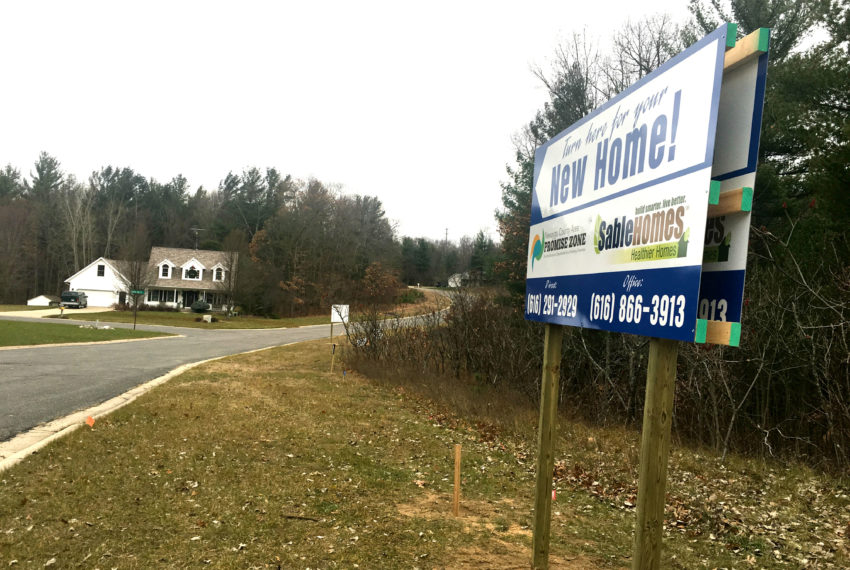
State officials eye Sable Homes’ River Hills Estates as model development for solving housing crisis
State officials and economic developers are eyeing Sable Homes’ River Hills Estates development in Newaygo as a new home development model that could solve the workforce housing crisis in Michigan.
John Bitely, president of Sable Homes, has long recognized the need for workforce housing for the “missing middle.” In early 2020, he began working with the City of Newaygo, Newaygo County, the Michigan Land Bank Authority and The Right Place to create a Tax Increment Financing authority (TIF) for housing, which would allow 10 years’ worth of tax increases on the 16 lots to fund the land improvements.
This public funding tool, which added support from brownfield incentives, hadn’t been used for housing — until Sable Homes’ River Hills Estates development. Now, this pilot program could be used across Michigan, state officials and economic developers told Bridge Michigan.
“Housing costs for the average Michigander — whether they rent or buy — are escalating at a rate that ought to be concerning,” Filka, executive director of the Home Builders Association of Michigan, told Bridge Michigan. “People are going further and further away from their jobs to find some kind of affordability.”
For River Hills Estates, Bitely determined the infrastructure costs – like building roads and bringing water lines to the lots – would push the housing prices too high for most Newaygo buyers. And he wanted to keep the home prices within reach for middle-income workers.
The housing shortage means “a segment of people is forced to become tenants or are renting longer,” Bitely told Bridge Michigan.
TIF is the same financial structure that allows Michigan downtowns to use increases in tax collections within the districts to fund improvements, or communities to help finance the cleanup of blighted property for a development, Bridge Michigan reports. It’s based on a municipality setting a base value for tax collections while anticipating that new development will increase the taxes collected on a property. The TIF then “captures” the money from the increased tax collection for a designated purpose with a community benefit.
In Newaygo, the benefit is new, single family housing. The city will wait 10 years to see increased tax revenue from the property taxes of the 16 houses built by Sable Homes. In the meantime, Sable Homes is paying for the infrastructure, but will get reimbursed from the tax collection over 10 years.
By finding a way to apply the TIF regulations to home construction, the subdivision in Newaygo should show policymakers in Michigan how lowering construction costs will increase economic growth and stem housing shortages statewide, Filka said.
“We are losing a whole (generation) of folks not building any kind of equity in a home,” Filka said. “… It’s a big policy issue for the state long-term.”
Newaygo isn’t alone in experiencing a housing shortage following a years-long slowdown in residential construction across the state. Buildings permits for single family homes peaked at 45,000 in 2005, then fell to around 5,000 by 2009. As the state recovered from the Great Recession, home building permits slowly climbed to about 15,000 in 2019 and 2020.
The Home Building Association of Michigan forecasts about 16,000 permits in 2021 – or roughly one-third of the building pace during peak construction years.
Newaygo city “has a strong workforce, but income levels aren’t as high as some places,” Bitely told Bridge Michigan. “Even if they’re dual income, a $300,000 or $400,000 home is out of reach.”
The situation is recurring in many communities in Michigan, said Emily Doerr, director of Michigan’s land bank, particularly in smaller towns successful in attracting large employers.
State government officials are looking at the problem, she said, and considering what policy changes could boost home ownership and housing availability.
“Talk to any number of CEOs around the state,” Doerr told Bridge Michigan. “They’ll tell you we need more attainable and affordable housing. This is pure economic development.”
Read the entire story, here.
